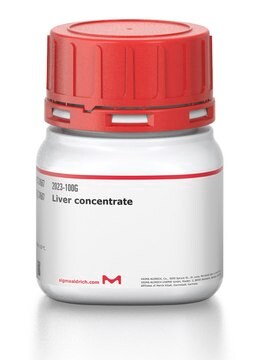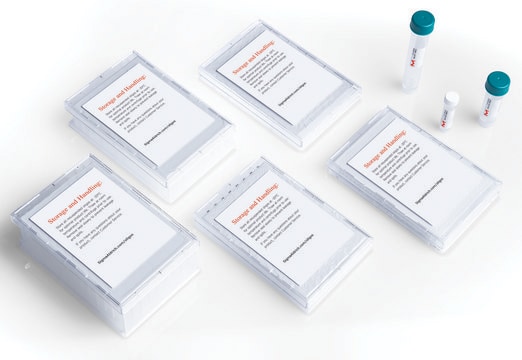추천 제품
애플리케이션
Rhodanese (RHOD) is an enzyme that converts cyanide to thiocyanate. RHOD may be useful in ulcerative colitis (UC) research as it has been shown to have detoxifying properties in the colon . Rhodanese is used to study sulfur energy metabolism .
생화학적/생리학적 작용
Rhodanese (RHOD) is the principal enzyme involved in hydrogen sulphide (H2S) detoxication in the colonic luman .
단위 정의
One unit will convert 1.0 μmole of cyanide to thiocyanate per min at pH 8.6 at 25°C.
Storage Class Code
11 - Combustible Solids
WGK
WGK 3
Flash Point (°F)
Not applicable
Flash Point (°C)
Not applicable
개인 보호 장비
Eyeshields, Gloves, type N95 (US)
Piotr Sura et al.
Comparative biochemistry and physiology. Toxicology & pharmacology : CBP, 154(3), 180-186 (2011-05-25)
The effect of mercury ions on the level of cysteine, glutathione, sulfane sulfur, and on the activity of rhodanese, 3-mercaptopyruvate sulfurtransferase (MPST) and γ-cystathionase in brain, heart muscle, liver, kidneys, testes and skeletal muscle of adult Xenopus laevis was investigated.
Hossein Tayefi-Nasrabadi et al.
TheScientificWorldJournal, 2012, 648085-648085 (2012-05-26)
Cyanide is one of the most toxic substances present in a wide variety of food materials that are consumed by animals. Rhodanese, a ubiquitous enzyme, can catalyse the detoxification of cyanide by sulphuration reaction. In this study, rhodanese was partially
Avinash Kale et al.
The Journal of biological chemistry, 286(24), 21254-21265 (2011-04-29)
The PEB4 protein is an antigenic virulence factor implicated in host cell adhesion, invasion, and colonization in the food-borne pathogen Campylobacter jejuni. peb4 mutants have defects in outer membrane protein assembly and PEB4 is thought to act as a periplasmic
Eda Koculi et al.
Protein science : a publication of the Protein Society, 20(8), 1380-1386 (2011-06-03)
Nuclear magnetic resonance (NMR) observation of the uniformly (2) H,(15) N-labeled stringent 33-kDa substrate protein rhodanese in a productive complex with the uniformly (14) N-labeled 400 kDa single-ring version of the E. coli chaperonin GroEL, SR1, was achieved with the
Clément Aussignargues et al.
The Journal of biological chemistry, 287(24), 19936-19948 (2012-04-13)
How microorganisms obtain energy is a challenging topic, and there have been numerous studies on the mechanisms involved. Here, we focus on the energy substrate traffic in the hyperthermophilic bacterium Aquifex aeolicus. This bacterium can use insoluble sulfur as an
자사의 과학자팀은 생명 과학, 재료 과학, 화학 합성, 크로마토그래피, 분석 및 기타 많은 영역을 포함한 모든 과학 분야에 경험이 있습니다..
고객지원팀으로 연락바랍니다.







